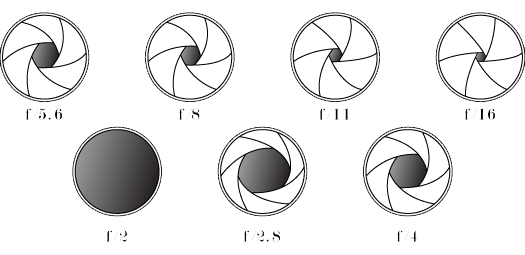
The Aperture setting (the opening of the iris that lets more or less light in) of a lens is measured in a unit called f-stops.
A wide-open aperture that lets the most light in is represented by a small f-stop number, typically something like f2.8 (or maybe f1.4 for a very “fast” lens that can shoot with less light.)
A nearly-closed aperture that lets almost no light in is represented by a large f-stop number, something like f11 or f16.
So a wide open aperture has the smallest number and a barely open aperture has a large number? Talk about hard to remember! What gives.
The answer is a lot of boring math that you don’t really need to know. So here’s a handy memory device instead:
When you think of f-stops, imagine the metal iris inside the lens wide open and then closing down. As you rotate the aperture ring the blades of the iris move in from the outside and the opening in the middle gets more and more narrow.
Now think of the f-stop number as the distance from the outer edge of the lens barrel to the end of the blades moving inward. A wide open aperture has a short distance in from the outer edge. A nearly closed aperture has a large distance covered by the blades.
And suddenly f-stops make some kind of sense.